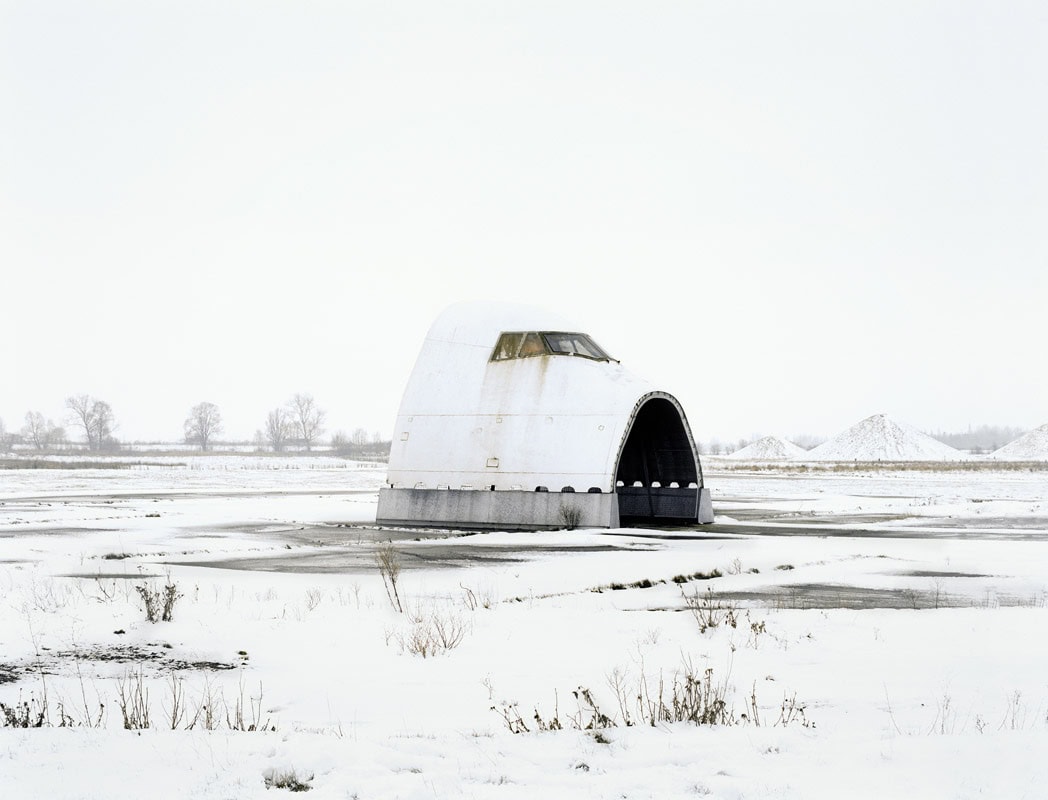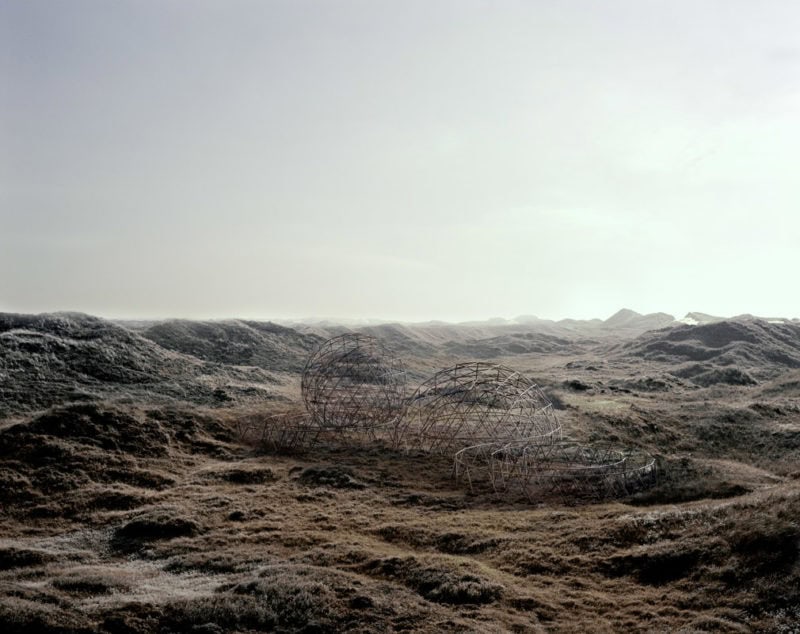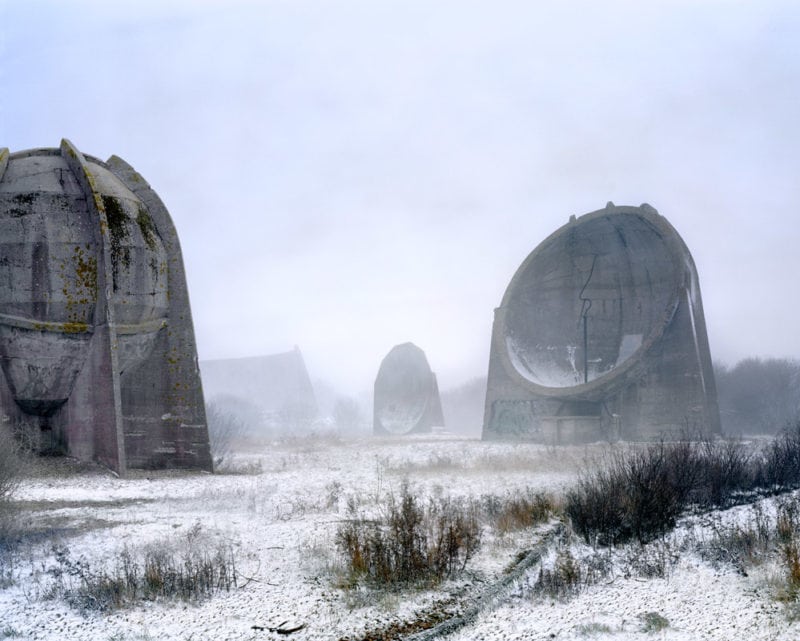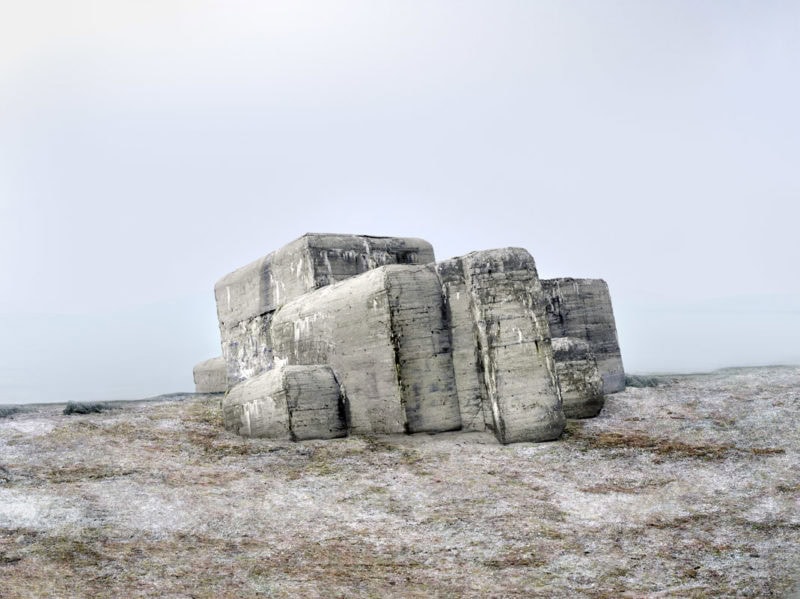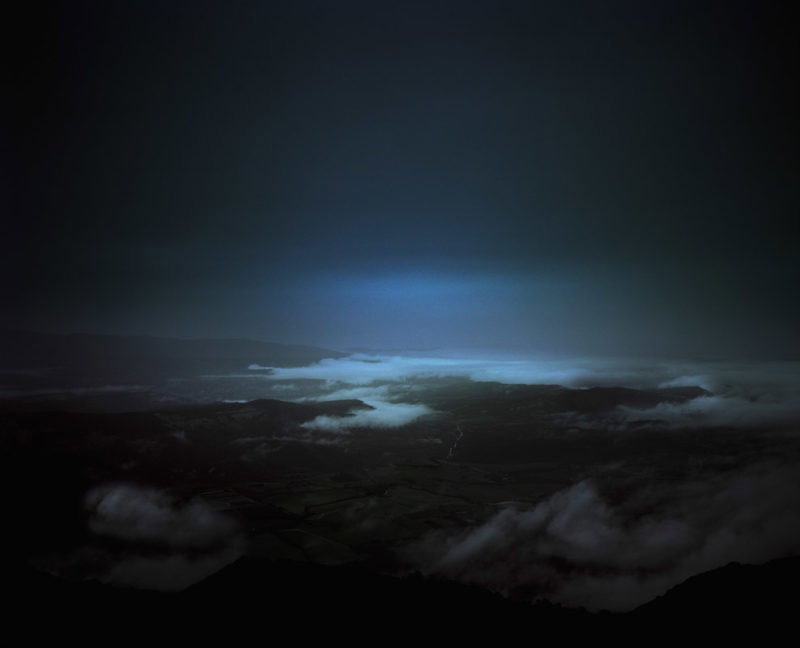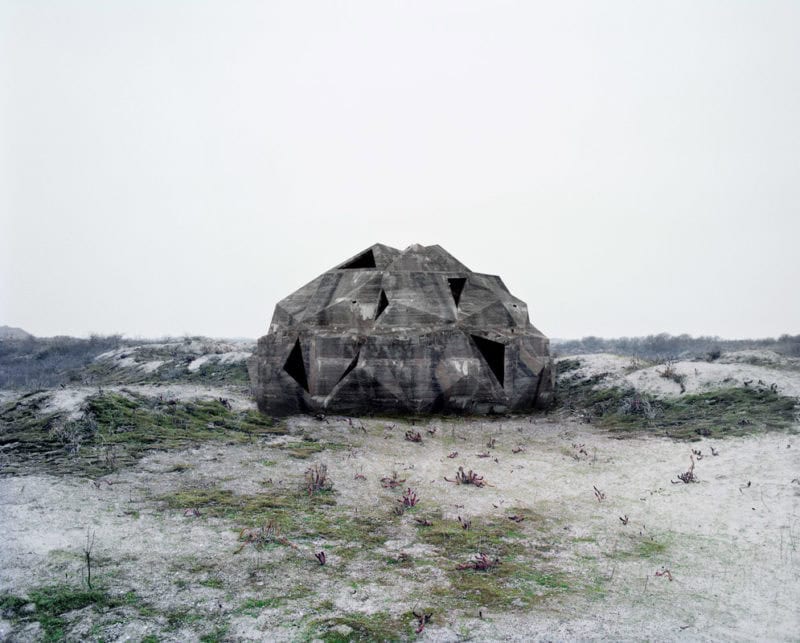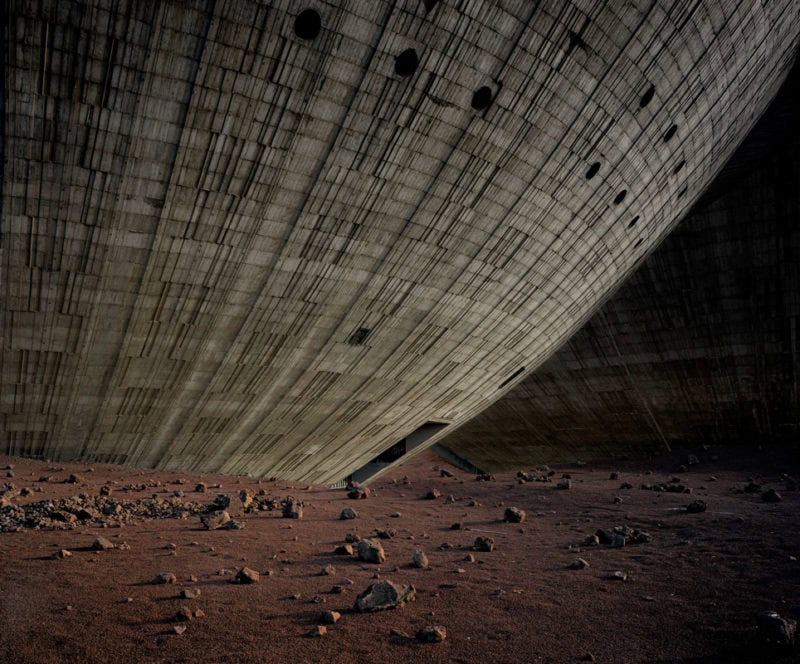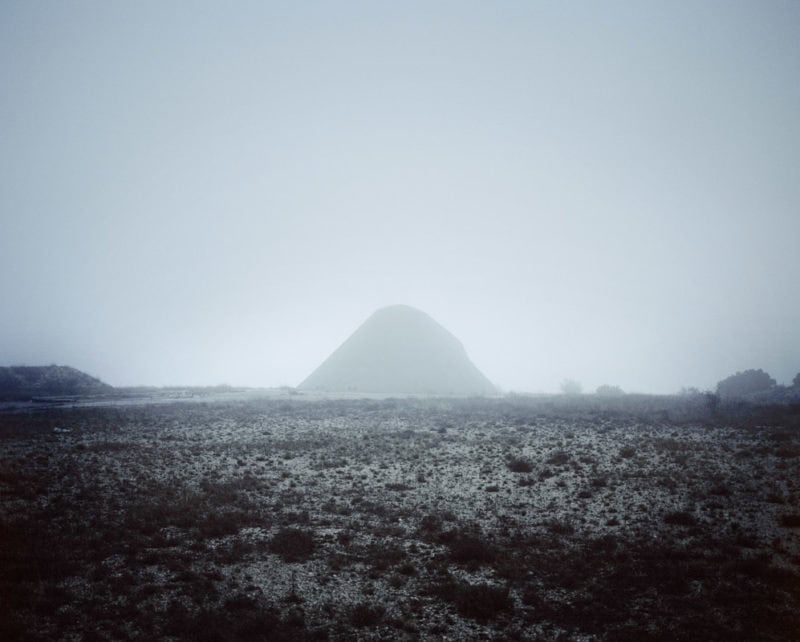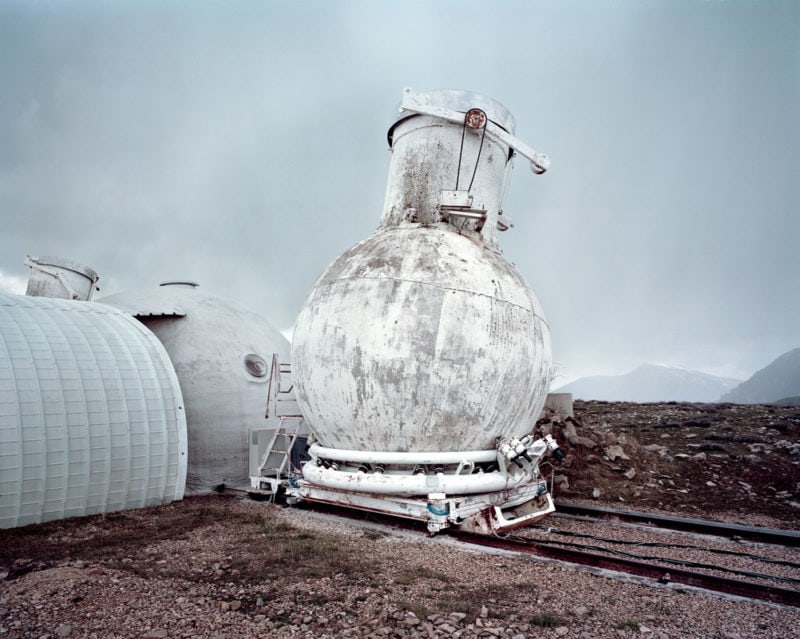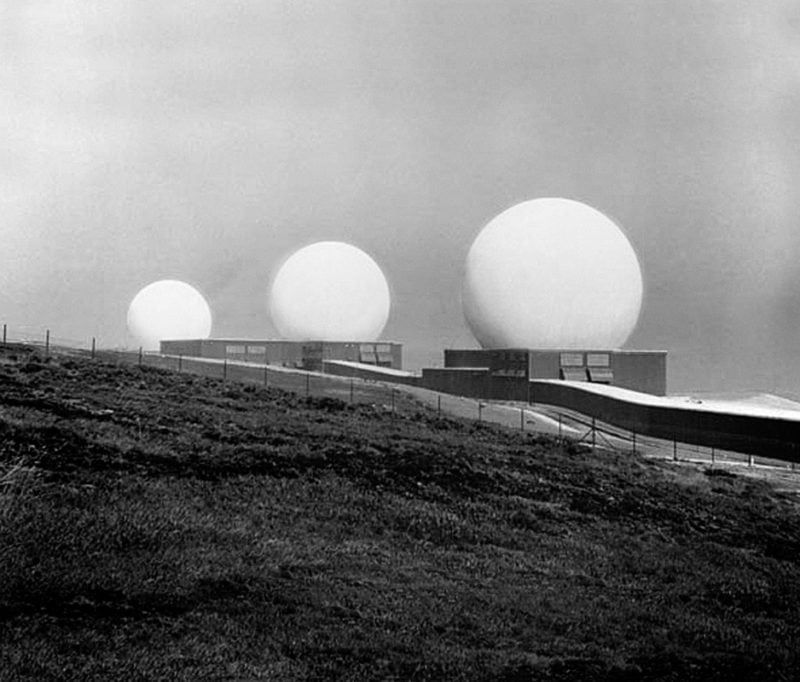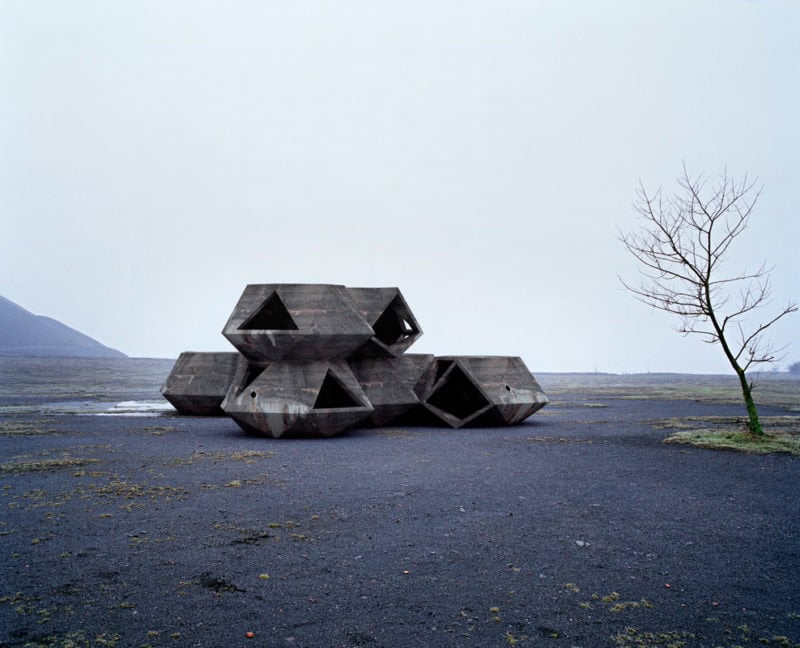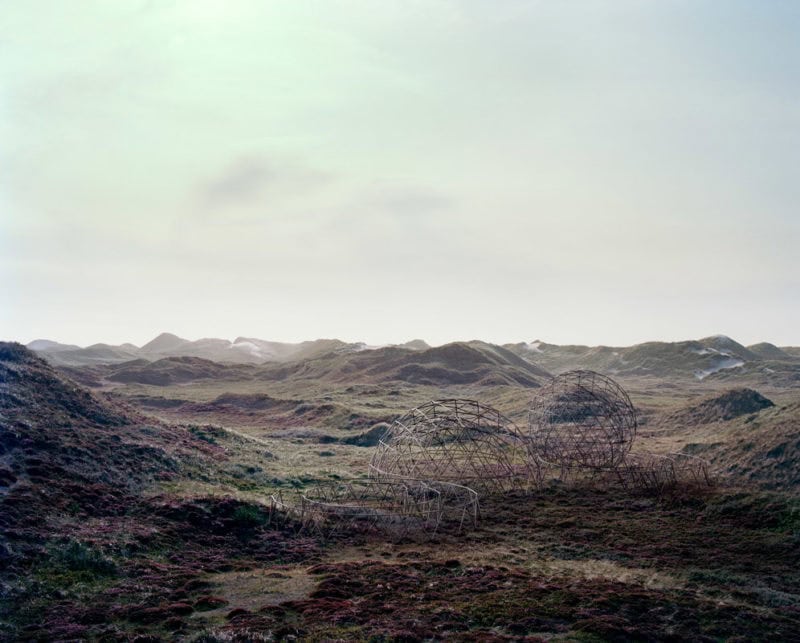David De Beyter is a french photographer. His approach to photography is both conceptual and documentary. He explores the boundaries between reality and fictio. De Beyter’s work melts together different registers – the present, past and future. His artistic work is mainly based on the concept of Landscape practice and through exhibition’s installations he questions the different status of the image. There is an anthropological side to what he does. Although present in his work since the beginning, it flourished with the Big Bangers project, a field study of the brutal and chaotic culture. On this occasion, he opens up his artistic work to moving images and sculpture, thus refining his reflection and his plastic propositions around the notion of obsolescence.
About ‘Concrete Mirrors‘ – words by David De Beyter:
Concrete Mirrors deals with the iconography of space conquest during the 60s, back to a climate of suspicion and paranoia linked to the cold war. Presented as a fake photograph-documentary, this project puts together three corpus of images of different nature and status, combining types of reality, these are documents, and virtuality, those are places.
With a form of historiography, the first chapter of this work shows a selection of utopian architectures from the 60s, scientific facilities and landscapes known for their Martian or Lunar-like landscapes. These architectures are not chosen for the formal appeal they can wear, but because they embody the obsolescence of a thought, the thought of utopia as a territory of thought and creation. From a documentation full of drawings and objects related to the prospective architecture of the 70s, the second chapter of this research aims, with a scattered use of 3D, to give a form of existence to unrealized projects that embody that mythology and to interpret them by means of a photographic staging. The third chapter explores a scientific and photographic documentation of that time, such as the photogrammetry or experiences led by NASA, whose specific tools helped defining the imagery of this conquest and developing the fantasy around it. This archeology thus proceeds to a methodology revealing a corpus where every image is inter-connected.
This romantic exploration establishes an imaginary territory throughout the documentation of a test area where formal anachronisms stress the gap between prospective vision and fallen mythology.
